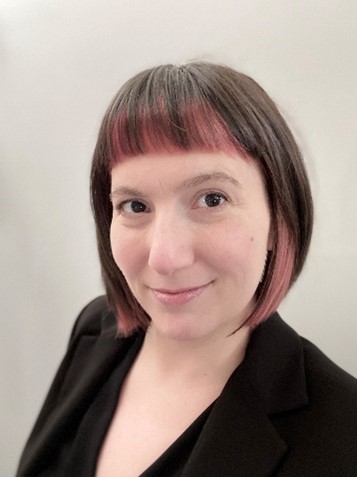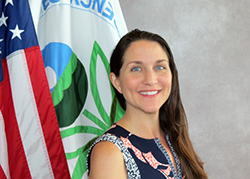Environmental Geophysics Applied to Site Characterization, Plume Mapping, and Remediation Monitoring
Sponsored by: U.S. EPA Office of Superfund Remediation and Technology Innovation (OSRTI)
Archived: Monday, October 15, 2018
Environmental geophysics investigates the geophysical response to natural and anthropogenic materials, processes, and alterations, which impact human health and ecosystems within the near surface of the earth. This presentation will cover biogeophysics, geophysical characterization and monitoring of contaminant plumes and remediation, groundwater - surface water interactions, using geophysics for conceptual site model (CSM) development, and online resources soon to be available at epa.gov. An overview of biogeophysics, which is the geophysical investigation of microbial processes and interactions in the earth, will include a summary of the geophysical response to biogeochemical reactions concluding with the current state of the science. Examples of using geophysical methods for monitoring remediation and contributing to the understanding of a site's geology will be shared. Mapping and monitoring the interaction between groundwater and surface water are included with examples utilizing fiber optic distributed temperature sensors and electromagnetic induction. The presentation will conclude with a description of EPA's Environmental Geophysics web presence that, once published, will include an online textbook, references, models, and decision support applications.
This is part of a geophysics webinar series:
- Environmental Geophysics Applied to Site Characterization, Plume Mapping, and Remediation Monitoring
- Borehole Geophysics Applied to Bedrock Hydrogeologic Evaluations
- Geophysical Method Selection: Matching Study Goals, Method Capabilities and Limitations, and Site Conditions
This webinar is a result of Recommendation 9 of EPA's Superfund Task Force, which encourages the Superfund program to "utilize state-of-the-art technologies to expedite cleanup." Actions under this recommendation include expanding the use of new site characterization and remediation technologies and approaches to address contaminated sites.
https://www.epa.gov/superfund/superfund-task-force-public-participation-opportunities#webinar
Accessibility, Recording, and Content Disclaimer
Rehabilitation Act Notice for Reasonable Accommodation
It is EPA's policy to make reasonable accommodation to persons with disabilities wishing to participate in the agency's programs and activities, pursuant to the Rehabilitation Act of 1973, 29 U.S.C. 791. Any request for accommodation should be made to Cindy Frickle at 703-603-8763 or frickle.cynthia@epa.gov, preferably one week or more in advance of the webinar, so that EPA will have sufficient time to process the request. EPA would welcome specific recommendations from requestors specifying the nature or type of accommodation needed. Please note that CLU-IN provides both alternate phone call-in options and closed captioning for all webinars, and requests for these specific accommodations are not necessary.
Webinar Recording
By participating in this CLU-IN webinar, you automatically agree to authorize recording of audio and visual content presented during this live event and consent to subsequent use of this recording in the public domain by the U.S. Environmental Protection Agency. This recording may include questions, comments and poll responses provided by you during the live event in addition to your name, voice, image or likeness. This recording will be made available after the conclusion of the live event as part of the CLU-IN webinar archives, and will remain available indefinitely. If you do not wish to consent to the recording, please do not join the live event, and contact Jean Balent at 202-566-0832 or balent.jean@epa.gov to discuss your concerns.
Content Disclaimer
This webinar is intended solely to provide information to the public. The views and opinions expressed as part of this webinar do not necessarily state or reflect those of the U.S. Environmental Protection Agency. It is not intended, nor can it be relied upon, to create any rights enforceable by any party in litigation with the United States, or to endorse the use of products or services provided by specific vendors. With respect to this webinar, neither the United States Government nor any of their employees, makes any warranty, express or implied, including the warranties of merchantability and fitness for a particular purpose, or assumes any legal liability or responsibility for the accuracy, completeness, or usefulness of any information, apparatus, product, or process disclosed, or represents that its use would not infringe privately owned rights.
Presenter:
Dale Werkema, Ph.D., U.S. EPA Office of Research and Development (Werkema.d@epa.gov)
Dale Werkema is a Research Geophysicist working in the U.S. EPA's Office of Research and Development in Corvallis, OR. He performs basic and applied research on the geophysical response to various contaminants, remediation methods, and for conceptual site model development. Dale serves the EPA Regions and Offices on the application of geophysical methods to various contaminants and site-specific technical issues. Dale earned his B.S. in geology from Wayne State University (1995), a M.S. in geology with an emphasis in hydrogeology and geophysics from Western Michigan University (1998), and a Ph.D. in geology with emphasis in geophysics from Western Michigan University (2002). He began working for EPA in 2002 after consulting and teaching during his graduate studies.
Moderators:
 Cindy Frickle, U.S. EPA Office of Superfund Remediation and Technology Innovation (frickle.cynthia@epa.gov or 202-566-0927)
Cindy Frickle, U.S. EPA Office of Superfund Remediation and Technology Innovation (frickle.cynthia@epa.gov or 202-566-0927)
Cindy Frickle is a physical scientist with EPA's Superfund program where she reviews and propagates technical information to site cleanup professionals through Clu-In, EPA forums, and interagency channels. Prior to joining EPA, she spent time characterizing contaminated sites, coring sediments, studying microbes, and teaching. She completed her Biogeology MS and Geology BS in the University of Minnesota's School of Earth Sciences.
 Jean Balent, U.S. EPA Technology Innovation and Field Services Division (balent.jean@epa.gov or 202-566-0832)
Jean Balent, U.S. EPA Technology Innovation and Field Services Division (balent.jean@epa.gov or 202-566-0832)
Ms Balent is on the staff of the EPA's Technology Innovation and Field Services Division where she has worked to collect and disseminate hazardous waste remediation and characterization information since 2003. Ms Balent manages the Clean Up Information Network website and actively supports online communication and collaboration resources available to EPA. She formerly worked with the US Army Corps of Engineers Environmental Engineering Division in the Buffalo District. Ms Balent was also a member of the SUNY-Buffalo Groundwater Research Group where she constructed and tested large scale models of groundwater flow. Ms Balent has also conducted research relating to the Great Lakes, environmental remediation, and brownfields re-development. She holds a Bachelor's degree in environmental engineering from SUNY-Buffalo and a Master's degree in Information Technology from AIU.
Webinar Slides and References:
Webinar Slides and References:
-
 Slide Presentation for Dale Werkema, Ph.D., U.S. EPA Office of Research and Development (13.6MB/PDF)
Slide Presentation for Dale Werkema, Ph.D., U.S. EPA Office of Research and Development (13.6MB/PDF)
Additional Resources:
- These materials will be available by Monday, October 15, 2018
If you have a suggested topic or idea for a future CLU-IN internet seminar, please contact:
Technology Integration and Information Branch
PH: 202-566-0832 | Email: balent.jean@epa.gov
Technology Integration and Information Branch
PH: 202-566-0875 | Email: adam.michael@epa.gov





